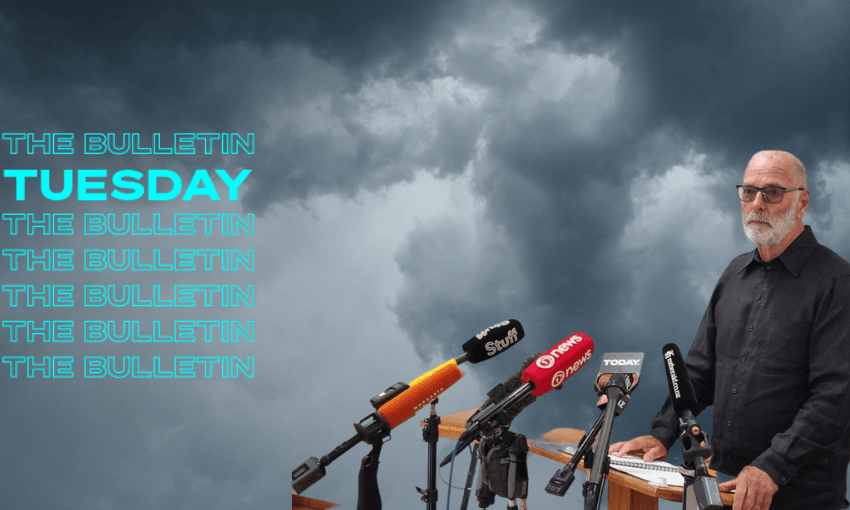While the upper North Island braces for more heavy rain, Auckland mayor Wayne Brown remains adamant he’s not resigning as a new text message about “media drongos” sent by Brown comes to light, writes Anna Rawhiti-Connell in this excerpt from The Bulletin, The Spinoff’s morning news round-up. To receive The Bulletin in full each weekday, sign up here.
Mayor adamant he will not resign as text message about cancelled tennis, “media drongos” and flooding emerges
On Friday morning we were worried about getting to the (subsequently cancelled) Elton John concerts and Wayne Brown’s love of tennis was but a mere quip. There are a few key threads emerging after the severe flooding in Auckland where four people died and the repair bill may get close to $500m according to one rough estimate. First to the question of whether Auckland was failed by poor leadership and communications. Stuff’s Kelly Dennett has pieced together an excellent timeline of events that reveals a city and its leaders caught on the backfoot. Mayor Wayne Brown remains adamant he will not resign but has admitted mistakes were made. The Herald has obtained a text sent by Brown in which he griped about having to cancel tennis “to deal with media drongos over the flooding tomorrow”. Toby Manhire pens a note to the rain in the form Brown might be wishing he’d stuck with – the letter.
What is an atmospheric river and how much rain did Auckland get?
Auckland has now had over 769% of its normal January rainfall and over 38% of its annual rainfall. The cause? An atmospheric river. James Renwick of Victoria University explained what one is really well in comments provided by the Science Media Centre. Atmospheric rivers are vast corridors of moisture that extend from the tropics to higher latitudes. The warmer the temperature, the more water vapour they carry. A significant atmospheric river carries as much water as the Amazon river. The Herald’s Jamie Morton outlines what we know about the second atmospheric river headed our way today.
“We’ve built our cities to be vulnerable to – and exacerbate – major weather events”
Big questions now exist about how well suited Auckland, and all our cities, are for a future where these events happen at a greater frequency. Both the prime minister and Auckland’s mayor agreed that what happened on Friday was a result of climate change. Timothy Welch, senior lecturer in architecture and town planning at the University of Auckland, says we’ve built our cities to be vulnerable to – and exacerbate – major weather events such as the one we saw in Auckland on Friday. Welch argues there is a better way to design our cities. He’s talking about sponge cities. No joy in saying this, but Bulletin readers were introduced to that concept after the Nelson floods last August. Here’s the really good long read on sponge cities that was included.
The need to know section
MetService has issued heavy rain warnings for Northland, Coromandel, the Auckland region and the Bay of Plenty. Satellite imaging shows the deepening low moving towards New Zealand. The warnings span a variety of locations and time frames between today and Wednesday so please keep an eye on them, take care and follow official advice. I hope all parents and carers with kids at kura, in early childhood education and at school have heard this by now and are coping with the news, but schools in the Auckland region are to remain closed until February 7. That’s been done to reduce traffic on the roads as repairs get underway. It looks like a lot of schools found out via the media and not from the Ministry of Education. Here’s a few other useful links if you need help or want to help:
- What you need to know about the state of emergency
- Where to get help and how to help
- How to clean up after a flood


